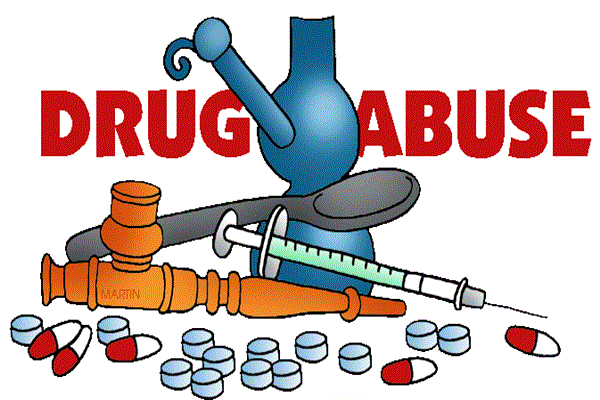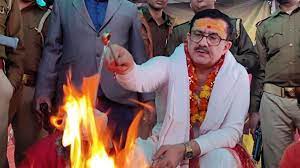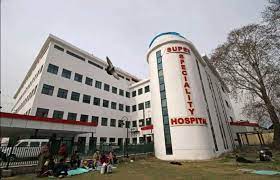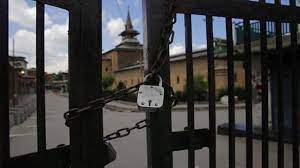Jammu & Kashmir Drug Crisis 2025: Narco-Terror Links, Youth Addiction & Urgent Solutions
By: Javid Amin | Srinagar | 23 July 2025
A Silent Epidemic Worsens in Jammu & Kashmir
In the breathtaking valleys of Jammu & Kashmir, a deadlier battle is unfolding beneath the surface—one not fought with guns or grenades, but with syringes, capsules, and powdered despair.
Despite a recorded drop in drug seizures, the ground reality paints a grim picture: addiction is soaring, trafficking routes are evolving, and the entire ecosystem is being weaponized by narco-terror networks to fund chaos and destabilization.
“This is not just a law enforcement issue. It’s a war for the minds and futures of our youth.”
— Senior J&K Police Official
Seizure Stats: Numbers That Mislead?
Drug seizures have seen a noticeable decline between 2021 and 2022, but experts warn these numbers may mask the real extent of the narcotics trade.
Drug Seizures at a Glance:
| Year | Narcotics (kg) | Pharma Units | Liquid Substances (litres) |
|---|---|---|---|
| 2021 | 22,082.41 | 1,71,954 | 4,069.23 |
| 2022 | 17,192.41 | 3,00,776 | Data Not Released |
While the reduction might suggest success in enforcement, ground reports and intelligence inputs indicate the contrary. Drug smugglers have simply become smarter, stealthier, and more strategic.
The Narco-Terror Nexus: Drugs as a Weapon of War
Jammu & Kashmir’s drug crisis is no longer a domestic issue—it’s an international operation, deeply linked to terror financing and cross-border sabotage.
Key Drug Routes:
-
LoC infiltration corridors in Poonch, Rajouri, and Kupwara
-
Drone drops from Pakistan in border districts like Samba and Kathua
-
Transit via Punjab into Kashmir, using truck routes and hidden compartments
Terror Funding Estimates:
Intelligence agencies estimate that over ₹500 crore annually is generated through narcotics trafficking, funnelled directly to terror outfits such as:
-
Lashkar-e-Taiba (LeT)
-
Jaish-e-Mohammed (JeM)
-
Hizbul Mujahideen
Heroin, in particular, has become the currency of insurgency, often smuggled in via drones or consignment mules using remote forest routes.
“Drugs have become both a tactical weapon and an economic engine for terror groups.”
— Defence Analyst
Who Are the Victims? The Young, the Poor, and the Forgotten
Addiction is now rampant among Kashmiri youth, with heroin dependence reaching crisis levels.
Addiction Statistics:
-
95% of users are aged 15–30
-
Over 13 lakh people are drug users—almost 10% of the total population
-
Syringe sharing is causing spikes in Hepatitis C and other infections
Many users spend ₹70,000–₹90,000 per month on heroin, often turning to crime, theft, or group pooling to fund their next fix.
Personal Stories:
-
A 19-year-old from Pulwama dropped out of college after developing severe withdrawal psychosis
-
A 22-year-old from Baramulla was hospitalized with collapsed veins due to reused syringes
-
In Anantnag, a local pharmacist was caught illegally selling tramadol in exchange for quick cash
The social breakdown is visible in every town, with an entire generation slipping through the cracks.
The Health Fallout: A Brewing Public Health Catastrophe
J&K’s drug crisis isn’t just a law and order concern—it’s a full-blown public health emergency.
Major Health Impacts:
-
Hepatitis C and HIV transmission from syringe sharing
-
Mental illnesses including depression, psychosis, and suicidal ideation
-
Loss of fertility and liver damage from chronic heroin use
-
Increased gender-based violence and domestic abuse related to substance dependence
Government hospitals are overburdened, and rehabilitation centers are too few and ill-equipped to handle the rising tide.
“We’ve had to turn away patients. There are more addicts than beds available.”
— Staff, Drug De-addiction Centre, Srinagar
Law Enforcement: Raids, Seizures & Crackdowns
The Jammu & Kashmir Police and Anti-Narcotics Task Force (ANTF) have ramped up operations across urban and rural belts.
Enforcement Milestones (2024–2025):
-
463 detention orders issued under PIT-NDPS Act in 18 months
-
Properties worth ₹7–8 crore seized from major traffickers
-
80 FIRs, 150 arrests, and UAPA charges against 40 top smugglers in 2025 alone
-
Seizures of drones, satellite phones, and coded ledger books used by narco handlers
Despite these gains, officers admit that conviction rates remain low, and supply chains regenerate rapidly due to local unemployment and cross-border coordination.
Community & Civil Society Response: Glimpses of Hope
There is growing awareness among citizens, educators, and religious leaders about the need for a societal counter-offensive.
Initiatives by Police & NGOs:
-
Weekly Thana Diwas sessions involving families of addicts
-
Anti-drug pledges taken at mosques, temples, and schools
-
Sports programs, music therapy, and art camps for vulnerable youth
-
Village-level surveillance teams to identify early-stage addiction
Counseling & Rehabilitation Efforts:
-
New de-addiction centers launched in Kupwara, Kathua, and Anantnag
-
Use of telehealth and mobile rehab vans in hilly areas
-
Peer-led outreach by recovered addicts to help others find a way out
“We’ve helped 120 youth quit drugs this year. Recovery is possible.”
— Counselor, Anantnag De-addiction Centre
The Way Forward: A Multidimensional Action Plan
01. Border Security
-
Install AI-based drone radars and motion detectors near LoC
-
Expand night surveillance patrols with IR technology
02. Public Health Response
-
Free and confidential addiction testing & treatment
-
Mass Hepatitis and HIV screening camps
03. Education & Prevention
-
Mandatory anti-drug curriculum in middle & high schools
-
Community watchdog groups to monitor local drug trends
04. Stronger Legislation
-
Fast-track NDPS and UAPA courts
-
Penalize pharma shops selling psychotropics without prescription
05. Cross-border Diplomacy
-
Press Pakistan at international forums over state-sponsored narco-terrorism
-
Work with Interpol and UNODC on intelligence sharing
Bottom-Line: The Battle for J&K’s Future Is Being Fought in the Shadows
Behind the scenic beauty of Jammu & Kashmir lies a grim reality—a rising tide of narcotics that threatens the region’s youth, economy, and national security. The numbers are chilling, but the human cost is even higher.
Without a holistic approach, involving government, civil society, and families, the fight against drugs will remain a losing battle.
But with resolve, empathy, and coordinated action, Jammu & Kashmir can reclaim its youth—and its future.



